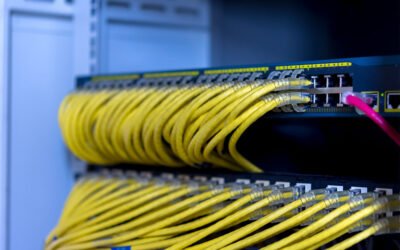There are great deals available for a new PC or laptop for your business. Here are 6 areas to consider to ensure you choose the right product that serves your business requirements.
- Processor speed. Intel’s i7 processor is faster than it’s i3 model, meaning

applications run faster. However, the extra speed may not warrant the additional cost if you don’t run processor intensive applications like CAD, or if you don’t normally have multiple windows opened simultaneously.
- Memory. PCs usually come with 4Gb of memory as standard. However, as people frequently have multiple windows open, a additional 4Gb of RAM will help to speed PC performance, expecially with memory intensive applications.
- Disc Storage. With the ever decreasing cost of cloud storage, the size of the Hard Drive is less relevant than it was in the past. We normally discourage storing critical files on local hard drives anyway, as these should be stored on an onsite storage device like a server, or offsite, such as the cloud. This provides protection against the possibility of a catastrophic hard drive failure. So you might be better off choosing a more stable Solid State drive, which has no moving parts, with lower memory, (e.g. 128Gb), instead of the traditional spinning hard disk drive which can have up to 1Tb of available space.
- Monitors. Most people just install 1 monitor on their new PC, but it’s possible to install a second monitor. This option provides people with a lot more visual space to do their work, especially if they commonly switch between applications or windows. A little homework is required however, to ensure the PC is capable of supporting this option, and what video output types, e.g. VGA, HDMI are required for the monitors.
- Microsoft Office. Virtually every business computer requires Microsoft Office to be installed, to avail of commonly used applications like Outlook, Word, Excel, or PowerPoint. Purchase options are either a one-time payment for a perpetual licence, or a monthly subscription, which includes built in backup for emails as well as cloud storage for your documents, as well as access to all product updates. Which option you choose depends on your particular business objectives.
- Setup. After you’ve researched the model for you, purchased it and had it delivered, there is still more work to be done once the PC is unboxed, including: Running Windows Updates – This might take several hours and requires the machine to be started multiple times. Uninstalling pre-packaged software – Much of the pre-packaged software on PCs is not required and can hamper performance. Install and setup Microsoft Office – This can catch many people out, as if it’s not done correctly, you might lose the licence and would need to purchase an additional one. Copying files and configuring Email accounts – This is required if you’re migrating from an old computer.
While this list is not exhaustive, it covers the main areas to keep in mind. If you have any questions based on this, please give our friendly experts a call today at 091 395413.




